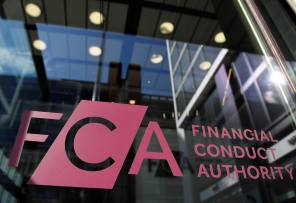
Like it or not, the changes introduced by the RDR have now been implemented. We all therefore have to get used to a world where commission can no longer be paid in respect of advised sales of investment bonds.
Instead, advisers need to make charges, both initial and ongoing. But how can these be collected where the investment bond has been taken out under trust?
Looking first at the initial adviser charge, we have to consider who is receiving the advice and, hence, who is responsible for paying it. In most cases the initial advice will be given to the client.
It will therefore be the client who will pay the initial adviser charge, either as a separate remittance to the amount being invested or via the provider-facilitated alternative. This allows the client to pay the gross amount to the provider who, before investing it in the proposed bond, hives off the initial adviser charge and pays it to the adviser.
However, the initial advice will not always go to the client. Imagine, for example, a client who wishes to create a discretionary gift & loan trust.
Gift & loan trust
He sensibly approaches a professional adviser, who recommends the creation of a discretionary trust. Trustees are appointed and the client then lends them an interest-free loan, repayable on demand. The trustees seek investment advice from the same professional adviser, who recommends an investment bond.
Here, the arrangement is completed in two steps: the initial advice to create the trust is given to the client, whereas the initial advice to invest the cash that they have borrowed is given to the trustees. So any initial adviser charge for the first step should be paid by the client, but the adviser charge for the second step should be paid by the trustees.
As a result, the client pays his share of the initial adviser charge to the adviser and lends the balance to the trustees. The trustees then pay the loaned amount to the product provider and, before investing it in the bond, the product provider pays the initial adviser charge to the adviser and invests the remainder in the bond.
Ongoing adviser charges
Turning now to the ongoing adviser charges, where the bond is subject to a trust it will be the trustees’ responsibility to pay these, since it will be the trustees who will be receiving the advice.
Since the only asset they have is the investment bond, they will need to take partial withdrawals from it in order to pay the ongoing adviser charge. Clearly, this will have an impact on the 5 per cent tax-deferred allowance.
So what will be the effect on, for example, a discretionary gift & loan trust?
Let’s assume that the trustees have agreed an annual ongoing adviser charge of 0.5 per cent of the amount invested at outset. This will mean that, if chargeable events are to be avoided, annual loan repayments cannot exceed 4.5 per cent of the amount invested at outset.
Discounted gift trust
As far as a discretionary discounted gift trust is concerned, if we again assume an annual ongoing adviser charge of 0.5 per cent of the amount invested at outset, this will result in annual fixed capital payments to the settlor of 4.5 per cent of the amount invested at outset to avoid chargeable gains.
This, in turn, will mean that the discount at outset will be based on annual payments of 4.5 per cent, resulting in a lower discount than had the full 5 per cent been used.
The new adviser charging rules also allow the amount of ongoing adviser charges to be based on a percentage of the fund value within the bond at the time of payment, although some providers may not be able to facilitate this option.
An annual ongoing adviser charge of 0.5 per cent of the amount invested at outset will be exactly the same amount year after year, but an annual ongoing adviser charge of 0.5 per cent of the value of the fund at the time of payment will vary each year as the fund value rises and falls.
Regular withdrawals
Where a regular withdrawal is being taken under a trust arrangement, such as a gift & loan trust or discounted gift trust, for example, in addition to a fund-based ongoing adviser charge, there is clearly a danger that the combination of the two could tip the total withdrawal over the available 5 per cent tax-deferred allowance.
Consequently, it would be advisable to impose a maximum amount on the regular ongoing adviser charge as well as, possibly, a minimum amount. Again, however, some providers may not be able to offer this facility.
Paul Thompson is a tax and estate planning consultant at Canada Life Wealth Management



